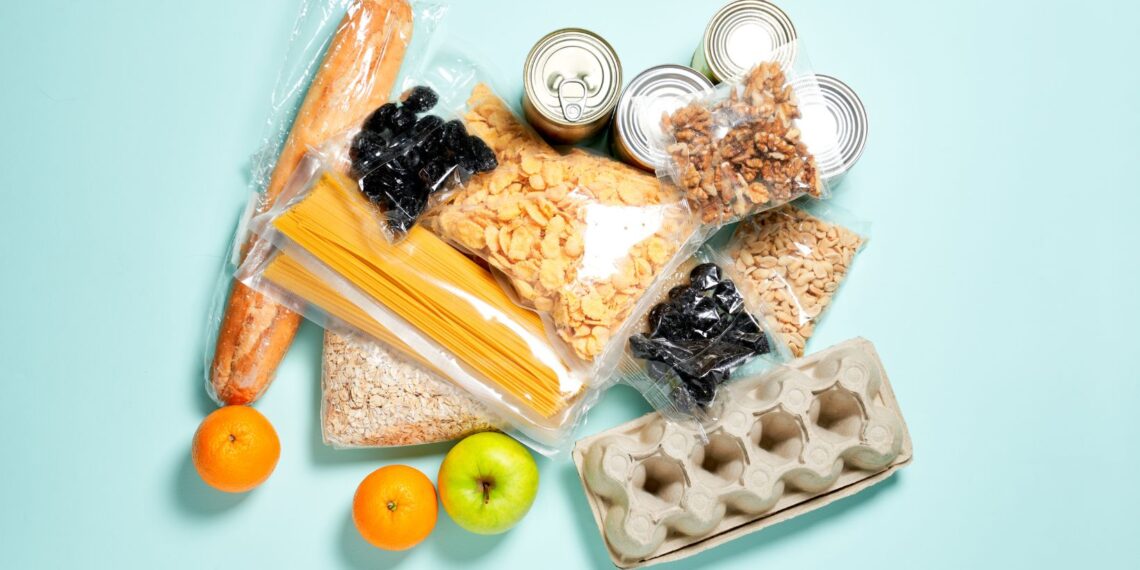
In times of uncertainty, having an emergency food supply can offer unparalleled peace of mind. This guide delves into the essentials of preparing and storing a well-equipped pantry within a self-storage unit, ensuring you’re ready for any situation. It’s not just about stocking up; it’s about strategic selection and preservation to ensure longevity, nutrition, and accessibility of supplies when needed most. From natural disasters to unforeseen circumstances, the right preparation can significantly ease the stress of emergency situations. We’ll explore what constitutes essential emergency food supplies, how to store them effectively, and the importance of climate control in preserving their quality over time. By the end of this guide, you’ll have a comprehensive understanding of how to create an emergency food supply that provides security, sustenance, and stability, no matter what comes your way.
Identifying Essential Emergency Food Supplies
Creating an emergency food supply requires careful consideration of what to store to ensure your and your family’s needs are met during unforeseen events. Essentials include a balanced mix of non-perishable items like canned goods, dried fruits and vegetables, grains, and proteins that offer both nutrition and variety.
Additionally, incorporating foods that require minimal to no cooking and have a long shelf life is crucial. Water, a vital component, should also be stored in ample amounts. Facilities like Hide-Away Storage offer the perfect environment for keeping these supplies safe and well-preserved. It’s important to tailor your food selection to the dietary needs and preferences of your household to ensure the well-being of everyone during stressful times.
By choosing wisely, you can build a comprehensive emergency food supply that not only sustains but also comforts, providing a sense of normalcy and security when it matters most.
Ideal Practices for Packing and Storing Food
Packing and storing emergency food supplies demand meticulous attention to detail to ensure longevity and maintain nutritional value. Using airtight containers and vacuum-sealed bags can significantly extend the shelf life of food by protecting it from air and moisture, two major culprits of spoilage. Labeling each container with the contents and the date of storage is also crucial for effective rotation and usage. For items prone to pests, such as grains and flours, sturdy, pest-proof containers are essential.

Additionally, storing food off the ground on shelving units in a cool, dry place helps prevent any potential water damage and keeps supplies easily accessible. Implementing these best practices in your storage strategy not only maximizes the lifespan of your emergency food supplies but also ensures that, when the need arises, your provisions are safe, nutritious, and ready to consume.
Climate Control for Long-Term Food Storage
The significance of climate control in preserving the integrity of long-term food storage cannot be overstated. Essential factors to consider include:
- Temperature Stability: Keeping storage areas cool to prevent spoilage.
- Humidity Control: Reducing moisture to ward off mold and bacteria.
- Ventilation: Ensuring air circulates to keep food dry.
- Protection from Light: Storing items in dark conditions to preserve nutrients.
- Pest-Free Environment: Securing food against infestations.
Utilizing a climate-controlled storage unit is a proactive step toward safeguarding your emergency food supplies against adverse conditions. These units provide an ideal environment that mitigates risks such as extreme temperature fluctuations, high humidity, and pest intrusion, all of which can compromise the quality and safety of stored food.
By prioritizing climate control in your storage strategy, you ensure that your emergency provisions remain safe, nutritious, and consumable over extended periods, ready to support your needs when reliance on them becomes critical.
Organizing Your Storage Unit for Easy Access
Organizing your storage unit for easy access to emergency food supplies is crucial for maintaining a state of readiness. Strategic placement of items ensures that you can quickly find what you need without hassle. Consider categorizing supplies by type—such as grains, proteins, and canned goods—and then by expiration date to facilitate rotation and minimize waste. Utilize shelving units to maximize space and keep items off the floor, protecting them from potential water damage.

Clear, labeled bins can help identify contents at a glance, saving valuable time during an emergency. Incorporating these organization principles not only keeps your supplies in optimal condition but also contributes to a happy and healthy lifestyle by reducing stress and ensuring nutritional needs are met efficiently during times of need. Thoughtful organization is a key component of effective emergency preparedness, providing peace of mind that you are well-equipped to handle any situation.
Regular Check-ups and Rotation of Supplies
To ensure your emergency food supply remains fresh and safe to consume, regular check-ups and rotations are imperative. This process involves:
- Inspecting for Damage: Checking cans and packages for dents, swelling, or leaks that could indicate spoilage.
- Monitoring Expiration Dates: Keeping track of expiry dates and using or replacing items before they go bad.
- Rotating Stock: Using the oldest items first (FIFO – First In, First Out) to keep the stock fresh.
Incorporating these steps into your routine every few months can significantly contribute to maintaining a reliable emergency food supply. It prevents waste, ensures food quality, and guarantees that your provisions are ready when needed.
Peace of Mind in Emergency Preparedness
The careful selection and maintenance of an emergency food supply in a self-storage unit offer more than just practical benefits; they provide peace of mind. Knowing you have a well-organized, accessible, and safe stash of nutritional resources ready for any emergency can significantly ease stress and anxiety about unforeseen events. This preparedness is not only a testament to foresight but also a crucial step towards ensuring the well-being and security of you and your loved ones in times of need.













